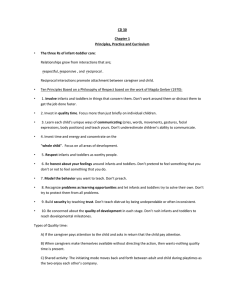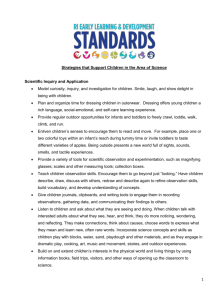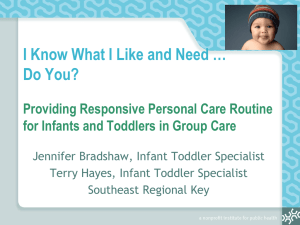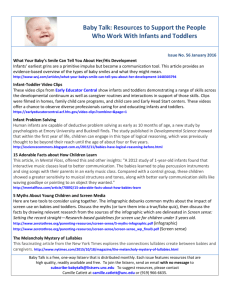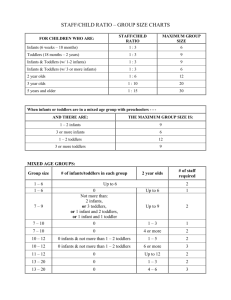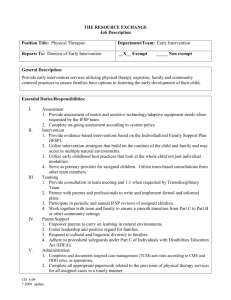Language and Literacy I - Pratt Educational Services, Inc.
advertisement
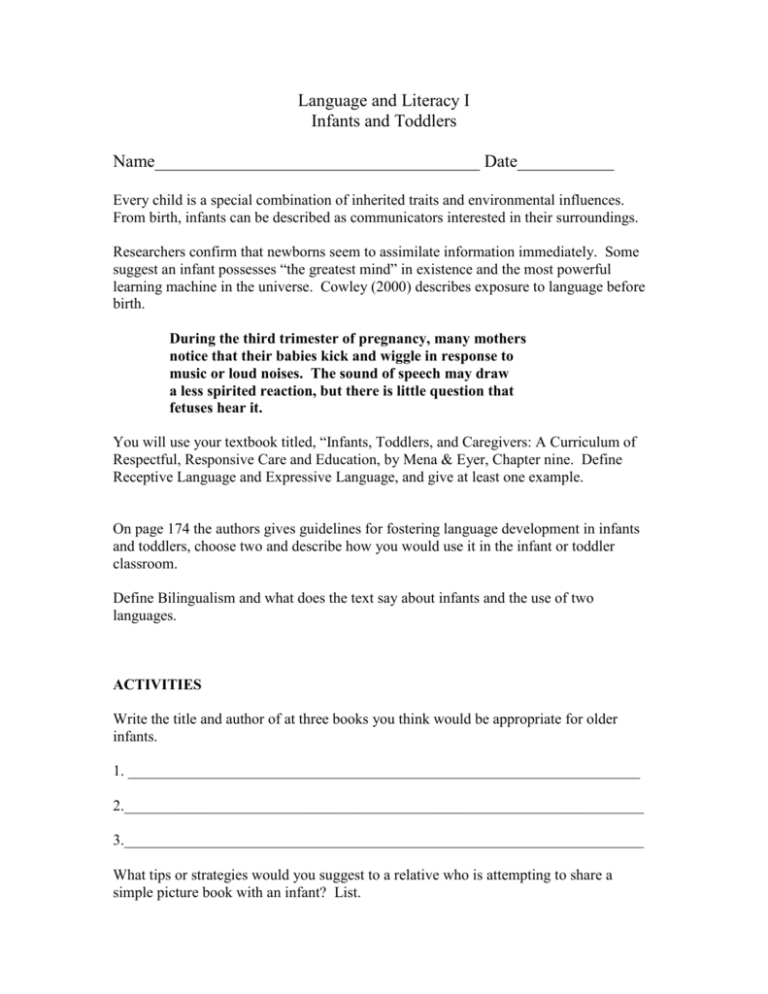
Language and Literacy I Infants and Toddlers Name_____________________________________ Date___________ Every child is a special combination of inherited traits and environmental influences. From birth, infants can be described as communicators interested in their surroundings. Researchers confirm that newborns seem to assimilate information immediately. Some suggest an infant possesses “the greatest mind” in existence and the most powerful learning machine in the universe. Cowley (2000) describes exposure to language before birth. During the third trimester of pregnancy, many mothers notice that their babies kick and wiggle in response to music or loud noises. The sound of speech may draw a less spirited reaction, but there is little question that fetuses hear it. You will use your textbook titled, “Infants, Toddlers, and Caregivers: A Curriculum of Respectful, Responsive Care and Education, by Mena & Eyer, Chapter nine. Define Receptive Language and Expressive Language, and give at least one example. On page 174 the authors gives guidelines for fostering language development in infants and toddlers, choose two and describe how you would use it in the infant or toddler classroom. Define Bilingualism and what does the text say about infants and the use of two languages. ACTIVITIES Write the title and author of at three books you think would be appropriate for older infants. 1. ____________________________________________________________________ 2._____________________________________________________________________ 3._____________________________________________________________________ What tips or strategies would you suggest to a relative who is attempting to share a simple picture book with an infant? List. Observe two infants (birth to 12 months). Note situations in which the infants make sounds and how adults (parents or teachers) react to the sound making. Make a book for toddlers from magazine illustrations or from photographs of common objects familiar to toddlers. Pages should be sturdy. Cut away any distracting backgrounds. If desired, outline objects with a wide-tip felt pen and protect pages with clear adhesive plastic or slip into page protectors. (An old binder works well to hold the pages.) Turn this in with this module. You can video clip or take digital pictures and submit via email. Discussion Board Question is on the Blog please answer and submit them on-line. References: Early Childhood Experiences in Language Arts Early Literacy, Jeanne M. Machado, 8th edition Infants, Toddlers, and Caregivers: A Curriculum of Respectful, Responsive Care and Education by Janet Gonzalez-Mena & Dianne Widmeyer Eyer, 6th edition

